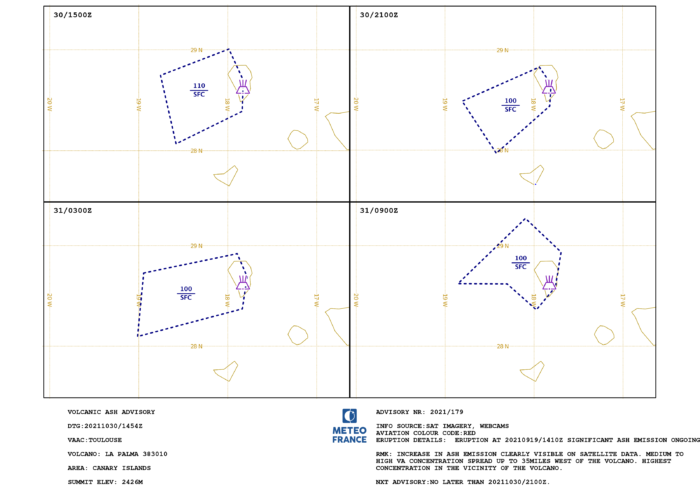The Canary Islands has been experiencing the effects of the eruption of Cumbre Vieja, in the southern part of the island of La Palma, since September 2021. The volcano’s lava flows have caused damage to property, ash plumes have disrupted air travel, and poor air quality caused by volcanic ash and noxious gases has had a negative impact on the health of local inhabitants.
Vaisala’s lidar ceilometer CL61 with depolarization capability has been measuring the volcanic ash layers aloft since the end of October. CL61 is installed at the courtyard of El Paso town hall, to the north of Cumbre Vieja at 723m above sea level. La Palma Airport is situated near the east coast town of Santa Cruz de la Palma.
The CL61 data is used for understanding the volcanic ash layer movements above La Palma but also to notify the people of El Paso for possible ash rain. Most of the time the prevailing winds drive the ash plumes toward the southwest, but occasionally the plumes have been detected above El Paso and the airport, leading to precautionary measures being issued for the public, such as guidance to stay indoors or to wear masks and protective clothing, and delays to air travel due to high ash concentrations.
Volcanic ash above the boundary layer
Here are some measurement examples from CL61 volcanic ash measurements. The first example shows the attenuated backscatter profiles in a time/height plot. In this picture we see a strong intensity signal within the boundary layer (up to 1,000m) but also a layer aloft at about 2,000m from 07:00 UTC onward. There are also clouds forming due to ash particles close to the top of the boundary layer, which are seen as a dark red signal on the plot.

When we observe the same day with the depolarization signal, which is based on the depolarization ratio between parallel and cross polarized signals, we can clearly see the volcanic ash layer aloft above the boundary layer. The ash layer is seen with a depol ratio of 0.3 to 0.4, and in this case the layer aloft traveled above La Palma island and did not cause ash deposition on the ground level. The cloud layer at the top of the boundary layer from 16:00 UTC to 20:00 UTC is a liquid cloud layer as it has a depol ratio close to 0.0, as are all the other clouds formed at the top of boundary layer on this day.

Volcanic ash rain
The second example shows volcanic ash rain, which was also observed on the ground level. The first picture show the Volcanic Ash Advisory Center (VAAC, Météo-France Toulouse) forecast of ash layer on October 30, 2021. From this we can see the forecast indicating that the layer is also above the town of El Paso and CL61.

The CL61 attenuated backscatter profile on October 30, 2021, shows high signal on the boundary layer but also layers above it. There is an especially high signal close to the ground from 05:00 UTC to 22:00 UTC.

When investigating the depolarization ratio profile for the same day, we can see the volcanic ash layer aloft but also much of the volcanic ash within the boundary layer. We can see the ash layer aloft above the boundary layer at around 2,000m height all day. The most interesting in this plot is to observe the volcanic ash rain, which caused an accumulation of ash on the ground. The depolarization signal indicates the deposition, which was also very visible on the ground by observers. Again, the depol ratio values at 0.3 to 0.4, which is well in line with the anticipated volcanic ash depolarization ratio signal.

This study of using CL61 with depolarization capability to observe volcanic ash at La Palma is made in cooperation with AEMET, Spain’s meteorological agency.



